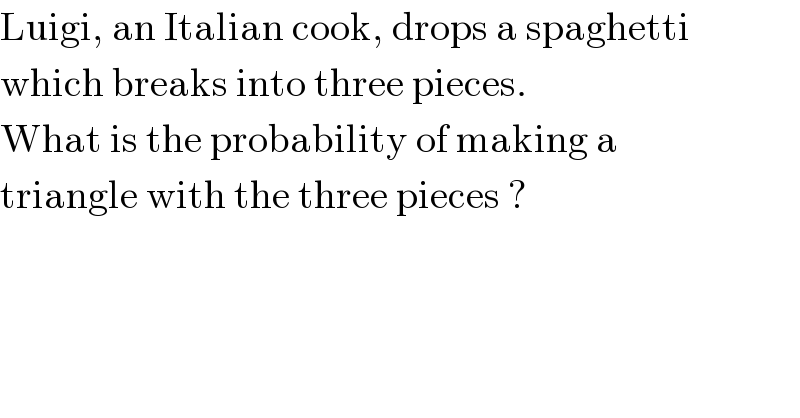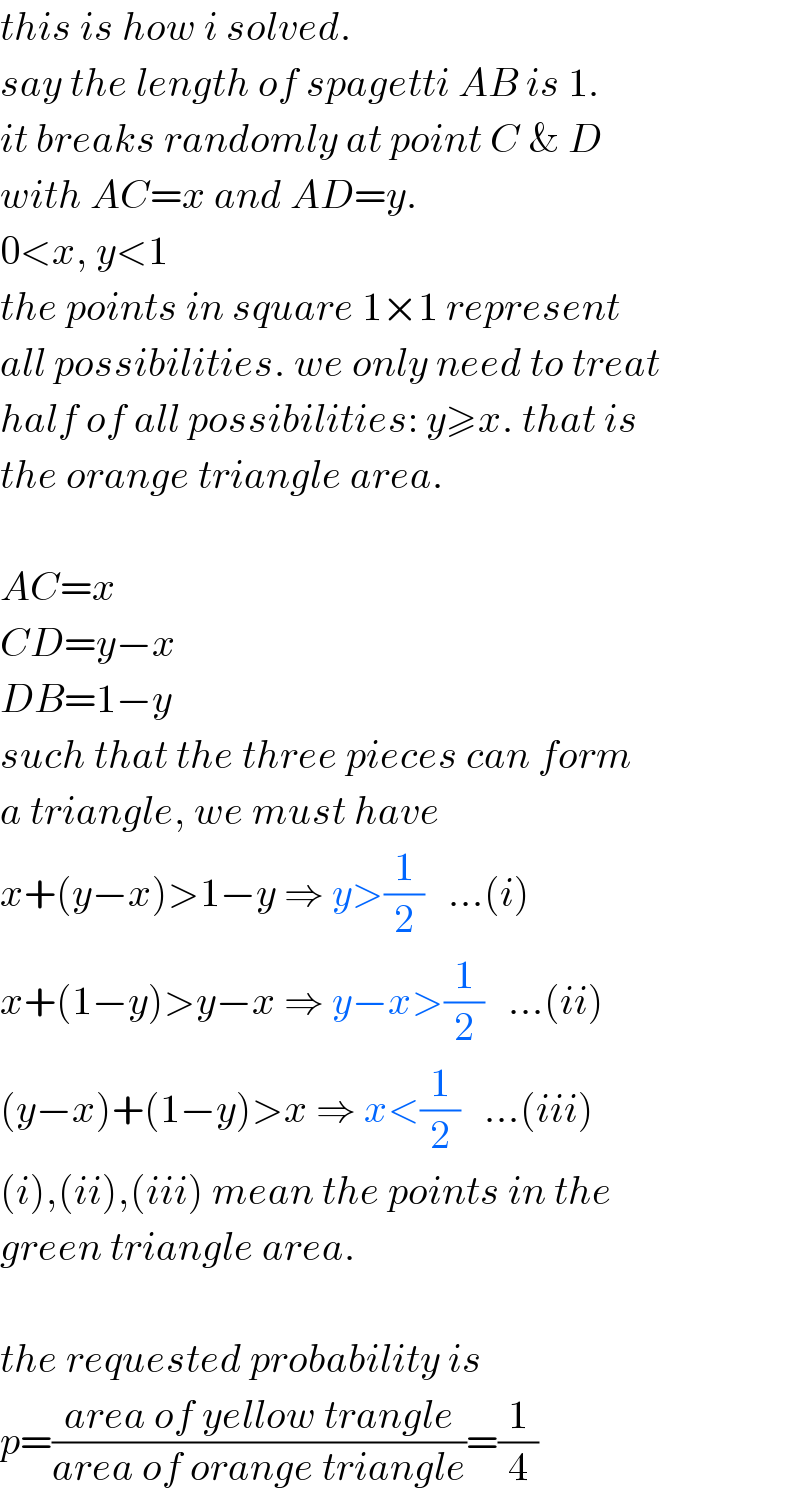
Question and Answers Forum
Previous in Probability and Statistics Next in Probability and Statistics
Question Number 116983 by Olaf last updated on 08/Oct/20

Commented by mr W last updated on 08/Oct/20

Commented by Olaf last updated on 08/Oct/20

Commented by mr W last updated on 08/Oct/20

Commented by mr W last updated on 08/Oct/20

Commented by Olaf last updated on 08/Oct/20

Answered by mr W last updated on 09/Oct/20

Commented by mr W last updated on 09/Oct/20

Commented by mr W last updated on 09/Oct/20

